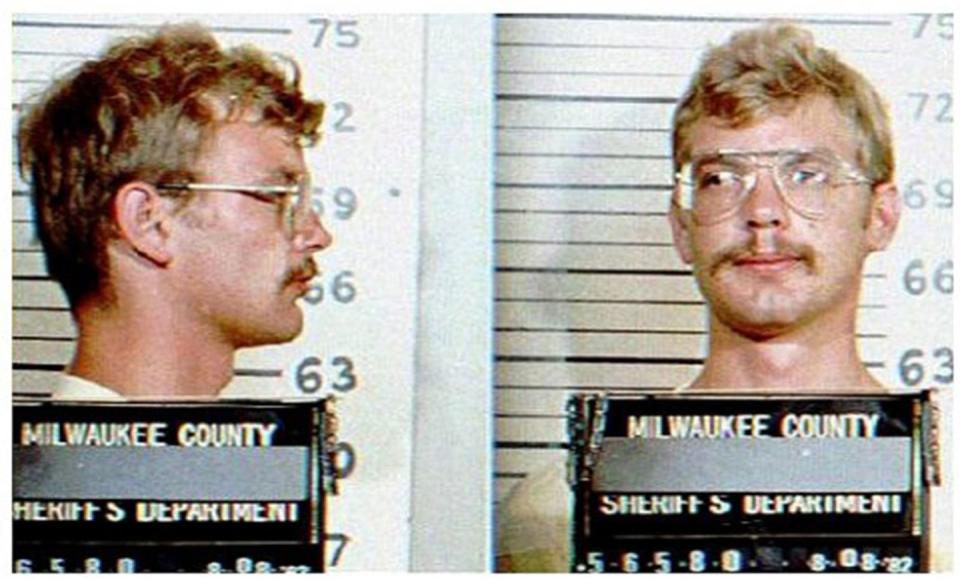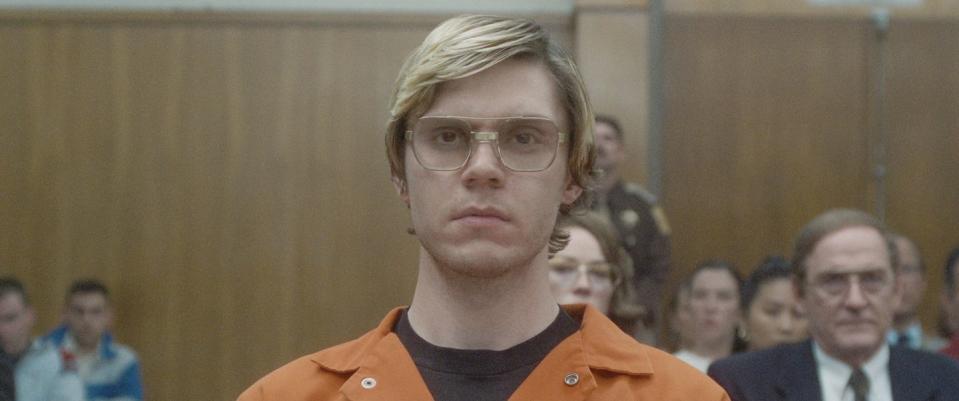What happened to Jeffrey Dahmer

Jeffrey Dahmer is one of the most prolific and high-profile serial killers in US history, a notorious murderer whose gruesome crimes earned him the nickname the Milwaukee Cannibal.
Between 1978 and 1991, Dahmer murdered at least 17 murdered men across Milwaukee, Wisconsin – most of whom were gay men of colour – to seemingly satisfy his own sexual urges.
After drugging, torturing and murdering his victims, some as young as 14, he would use their bodies for sexual acts, eat their remains, or preserve parts of their corpses in his apartment.
It was only when one potential victim, 32-year-old Tracy Edwards, escaped from Dahmer's apartment that the killer's crimes were uncovered. Edwards had gone back to Dahmer's home after Dahmer had offered him $100 to pose for some nude photos, but was immediately wary after he entered and smelt a foul odour that he believed was coming from a plastic drum in the corner of the room.
Although Dahmer brandished a knife at him, Edwards managed to flee the apartment and ran into the street, flagging down two police officers who then returned to Dahmer's apartment with him. They arrested him after one of the officers found a collection of Polaroids in a drawer that showed a number of human bodies in various stages of dismemberment that had been taken there.
When the police thoroughly searched the apartment, they discovered four severed heads in Dahmer's kitchen, alongside bagged up human organs and body parts. The giant drum Edwards had seen in Dahmer's bedroom contained four torsos dissolving in acid.
But what do you do with a man like this when the death penalty has been abolished in the state?

Dahmer would later willingly confess to everything he had done in recorded interviews, without a lawyer present. He contested the idea that he would target people of colour deliberately, instead stating he had a ‘preferred body type’.
These tapes are due to be released on October 31 on Netflix as part of their ongoing Conversations With A Killer series, following the success of the Ryan Murphy-produced drama series Monster: The Jeffrey Dahmer Story, starring American Horror Story’s Evan Peters in the title role.
Whether or not Dahmer suffered from a mental disorder that prevented him from controlling his emotions became the debate in his court hearing, rather than whether or not he was guilty. Dahmer pled guilty, but with an insanity defence in the first hearing in February 1992.
Both the prosecution and the defence brought in expert witness testimony from psychiatrists and doctors who claimed Dahmer suffered from numerous psychological disorders including schizotypal disorder, borderline personality disorder and obsessive compulsive disorder.
Both sides agreed he was a paraphiliac (ie had deviant sexuality) and necrophiliac (had sexual attraction to dead bodies).
However, the distinction comes with whether any of these diagnoses would mean he was incapable of stopping himself and his compulsions. The defence argued that he was not of sound mind when the crimes took place, while prosecution retorted that his missed opportunities to come clean, as well as his preparation for the murders and hiding of the evidence, meant that he knew what he was doing.

The jury eventually declared him sane enough to understand what he was doing was wrong at the time of each murder, given his otherwise charming persona, ability to conceal his dark urges in public, knowledge to get his victims alone to prevent witnesses, and his concealing of the crimes.
Wisconsin had abolished the death penalty and as a result he was handed a total of 15 life sentences. He was dead by the end of 1994.
How did Jeffrey Dahmer die?
Jeffrey Dahmer was murdered at Columbia Correctional Institution on November 28, 1994.
He had spent his first year in prison living in solitary confinement due to concerns he’d be targeted by other prisoners aware of his horrendous crimes.
However, upon Dahmer’s request he was later moved into general population, saying that the solitary confinement had been too restricting for him and he needed some kind of mental stimulation.
As part of his work duty, he had to clean the toilet block for two hours a day.

While in prison, Dahmer became obsessed with Christianity, having requested a Bible while waiting for his court hearing. He later devoted himself to the faith and was baptised in May 1994.
There had been attempts made on his life, including one just two months after his baptism, where an inmate came at his throat with a makeshift ‘shank’ created from a razor embedded in a toothbrush while he was attending church.
It has been reported by multiple sources close to Dahmer, including his parents, that he was ready and willing to die for what had occurred.

On November 28, he was bludgeoned to death by convicted murderer Christopher Scarver using dumbbells taken from the prison gym. Jesse Anderson, another killer on the block, was also badly injured in the same attack.
Dahmer survived long enough to get to hospital, but died an hour later. Anderson died two days after the fact.
Scarver confessed to the murders quickly after the attack, claiming that “God had told him to do it”. He was given two further life sentences.
Monster: The Jeffrey Dahmer Story is available now on Netflix.
If you've been affected by the issues raised in this story, you can access more information from Rape Crisis England and Wales, who work towards the elimination of all forms of sexual violence and sexual misconduct, on their website or by calling the National Rape Crisis Helpline on 0808 802 9999. Rape Crisis Scotland’s helpline number is 08088 01 03 02.
Readers in the US are encouraged to contact RAINN, or the National Sexual Assault Hotline on 800-656-4673.
You Might Also Like

 Yahoo News
Yahoo News 
